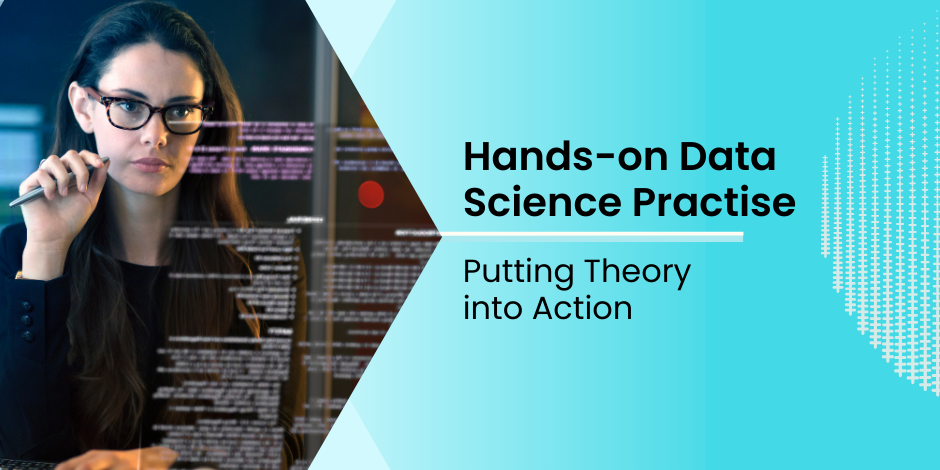Hands-on Data Science Practice: Putting Theory into Action

Stay Informed With Our Weekly Newsletter
Receive crucial updates on the ever-evolving landscape of technology and innovation.
In data science, theory and practice are two distinct entities.
However, the true power of data science lies in the harmonious blend of these two aspects.
This article explains the hands-on data science practice and how it can be outworked step-by-step.
Understanding data science

Data science uses scientific methods, processes, algorithms, and systems to extract knowledge and insights from unstructured and structured data.
It blends various tools, algorithms, and machine learning (ML) principles to discover hidden patterns in raw data.
However, understanding the theory is just one part of the equation.
The real value of data science is realised when these theories are put into practice, solving real-world problems and providing actionable insights.
The importance of a hands-on data science practice
A hands-on data science practice is crucial for several reasons.
Firstly, it allows data scientists to apply their acquired theoretical knowledge. This reinforces their understanding and helps them see how the theories work in real-world scenarios.
Secondly, a hands-on data science practice helps develop critical thinking and problem-solving skills.
By working on real data sets and trying to solve actual problems, data scientists learn to think outside the box and develop innovative solutions.
Putting data science theory into action

Now that we understand the importance of a hands-on data science practice, let’s explore how to put theory into action.
This involves a series of steps, each crucial in the data science pipeline.
Step 1: Data collection
The first step in any data science project is data collection.
This involves gathering data from various sources, such as databases, files, APIs, web scraping, or even real-time data streams.
The type and amount of data collected will depend on the specific problem you are trying to solve.
A hands-on data science practice at this stage involves learning how to use various tools and techniques for data collection.
This could include SQL for querying databases, Python libraries like BeautifulSoup for web scraping, or Apache Kafka for real-time data streaming.
Step 2: Data cleaning and preprocessing
Once the data is collected, the next step is data cleaning and preprocessing.
This is a crucial step in the data science pipeline, as the quality of your data will greatly impact the results of your analysis.
A hands-on data science practice here involves learning how to handle missing values, remove duplicates, deal with outliers, and perform feature scaling, among other things.
Tools like Pandas and NumPy in Python are often used for data cleaning and preprocessing.
Step 3: Exploratory data analysis

After the data is cleaned and preprocessed, the next step is exploratory data analysis.
This is where you get to know your data, understand its characteristics, and uncover the underlying patterns.
At this step, a hands-on data science practice involves learning how to use visualisation tools like Matplotlib and Seaborn in Python, or ggplot2 in R, to create histograms, box plots, scatter plots, and more.
It also involves learning to use statistical measures to better understand the data.
Step 4: Model building and evaluation
The final step in the data science pipeline is model building and evaluation.
This is where you apply ML algorithms to your data to make predictions or discover patterns.
A hands-on data science practice involves learning how to use ML libraries like Scikit-learn in Python, or Caret in R, to build and evaluate models.
It also involves learning how to tune the parameters of your models to improve their performance.
Conclusion
A hands-on data science practice is crucial for anyone looking to make a career in this field.
It reinforces theoretical knowledge and provides invaluable experience in dealing with real-world data and problems.
You can start implementing your data science theory following the steps outlined above.
Remember, the key to becoming a successful data scientist is understanding the theory and how to apply it in practice.
Are you ready to boost your data science career?
The Institute of Data’s Data Science & AI Program equips you with the latest tools, technology, and practical know-how taught by industry professionals.
Please download a Data Science & AI Course Outline to learn more about the curriculum & modules of our 3-month full-time or 6-month part-time programs.
Join us for a supportive community and like-minded connections to advance your career options in this ever-evolving tech arena.
Ready to learn more about our programs? Contact our local team for a free career consultation.





